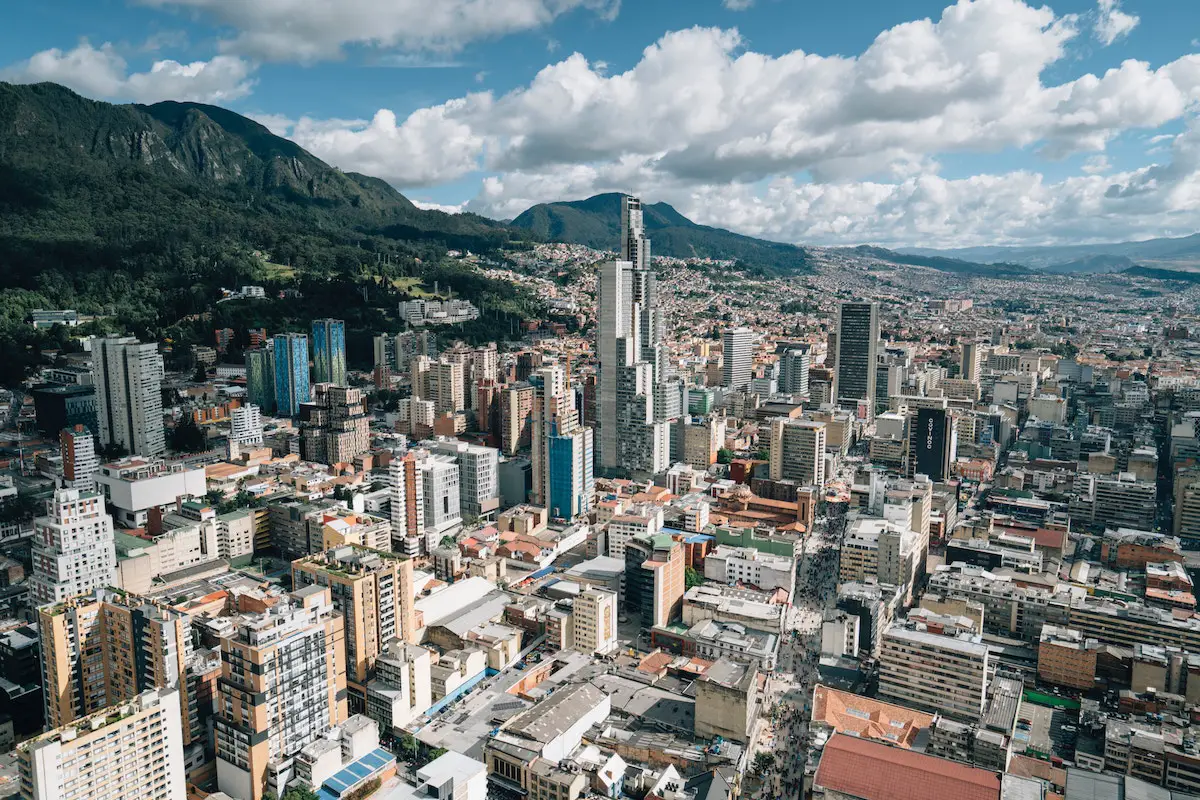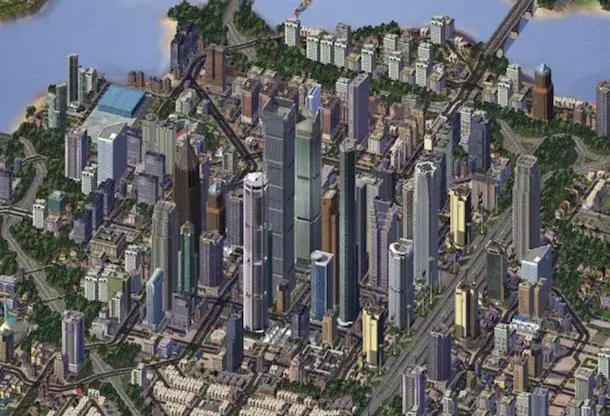After an hour and a half of driving, I was pretty thoroughly disgusted with the whole idea of suburbs. I became more and more unreasonable as I became more and more lost. What’s the difference between “96th Street” and “96th Street Terrace?” Why were there so many parking lots? If you cut out every flower bed containing a single bush I passed by, I would be there by now! At a little past noon, after confusedly crossing the state line three times, I finally found a parking spot at the Johnson County Community College, ran/walked to the Carlsen Center, tried to catch my breath, and sat down at the next talk of Kansas City Design Week.
I was therefore in a fairly receptive mood when I attended the evening event, a talk given by architect James Moore imagining the future of the city – a dense future of diminished car use. Suburbia is a favorite target of urban planners and architects (see, for instance, James Howard Kunstler’s funny and incendiary TED talk on the “tragedy of suburbia”) for both aesthetic and practical reasons. Bluntly speaking, sprawl tends to be cheap-looking and rather ugly; rarely does a random grouping of box stores create outdoor spaces where people might wish to linger. On a functional level, many studies have shown that denser urban areas promote economic growth and more efficient use of resources. The most sustainable cities tend to use their money to develop a core where services and amenities are easily accessible. Many young Americans are seeking out denser areas, and it’s not difficult to understand why. In the 1960s, about half of households in the U.S. consisted of nuclear families; in 2011, that group only makes up a fifth of the population, noticeably less than the number of single adults living by themselves. The demand for density, then, is tied back into the need for social contact, which is no longer satisfied entirely by home life (if it ever really was.) As planners move forward, the importance of a city that facilitates not just the economic development but the emotional health of its communities cannot be overstated.
I spoke with architect Jay Tomlinson of Kansas City firm Helix about the city’s recent efforts to redevelop and densify the downtown area. He helped found the Urban Society of Kansas City, which developed a manifesto to address the revitalization of the area, focusing on vastly increasing transit, housing, and economic development in the core. Through the eighties and nineties, he described the city as “a shadow of itself,” with a huge stock of underused buildings from Kansas City’s industrial heyday. In the past ten years, six billion dollars has been invested in the public and private domains in Kansas City. Both the federal and the Missouri state governments provide a substantial tax incentive to encourage the otherwise financially daunting task of renovating historic buildings. These buildings contribute inestimably to the architectural character of the city, and thus to the city’s ability to foster happiness and creativity.
This kind of historically sensitive development can be tricky; Tomlinson explained that an office today usually calls for a floorplate of at least 25,000 square feet to efficiently house their employees, but these older buildings rarely exceed 10,000 square feet a floor. However, smaller footprints are relatively easy to divide up into apartments, particularly single-bedroom units that cater to an influx of young professionals. The difficulty remains of conveniently and sustainably transporting the people Kansas City hopes to attract to its downtown. Though Kansas City once had over 300 miles of streetcar track, its public transit system is now entirely composed of buses that are unsuccessfully competing with individual car usage. Tomlinson said that he thinks a new movement for street car lines is finally beginning to take hold, perhaps due to the increasingly rapid development of the downtown, particularly the Power and Light District. He says that building fixed-rail transit will, in turn, encourage development clustered around each station.

River-and-rail cities like Kansas City have the additional complication of growing out of an extensive agricultural network. Much of the city’s original growth depended on shipping cattle and grain products. It sits at the junction of the Kansas and Missouri Rivers, a node connecting those two heavily agricultural states. Is it harder for a region with recent and powerful ties to a rural mode of living to transition to a dense city life? The European or East Coast model of a city has to fight not only the postwar image of the idyllic suburbs but also the pre-megafarming ideal of distanced self- sufficiency. I am speaking from personal experience, but for many raised in agricultural areas, on some level moving to a tightly packed city is giving up the dream – of the interconnectivity of small towns, of some sort of real or imagined autonomy, of ample space and access to nature. A quick look at online statistics will tell you that Kansas City is currently about 1/17th the density of the New York, 1/11th the density of San Francisco, and 1/8th the density of Boston, all usually regarded as archetypal American urban areas. I think it’s important to recognize that this difference is not just the result of sloppy planning and economic struggles in the Midwest, but rather of a dramatic divergence in historic development and cultural expectation. How can planners take a model that is still somewhat foreign to this area and tailor it specifically to the issues Kansas City presents?
For instance, concerns have been voiced about developing an extensive downtown transit network; how will this service benefit the many thousands of people outside the commuting range of this system? Kansas City itself covers about 600 square miles of Missouri, but the metro area is nearly 8000 square miles. However, it is certainly not unheard of to be able to traverse this large of an area comfortably using public transportation. Rural communities up and down the Missouri in the early part of the 1900s were closely linked by small train depots, including towns of no more than a few hundred people. Perhaps planners and investors should be encouraging this vast metro area to congeal into clusters of development around transit stations, rather than focusing entirely on the downtown. In his talk, James Moore repeatedly emphasized the importance of the city’s role in promoting its citizens’ happiness. It is important not to dismiss their desires for their future communities in favor of a predetermined notion of what a sustainable city looks like.
Sharon Gochenour is a writer, illustrator, and designer from southwest Iowa. She focuses on daylighting research and the intersection of historic preservation and sustainability.
Photos: sombraala and kswx_29


